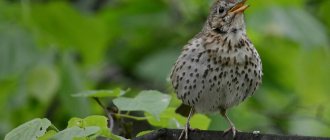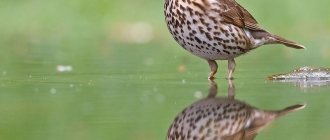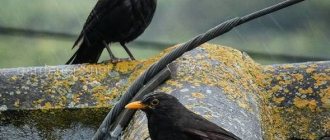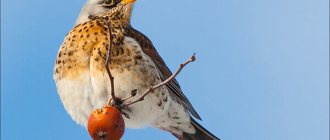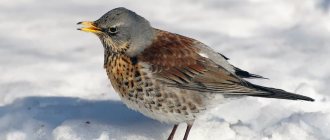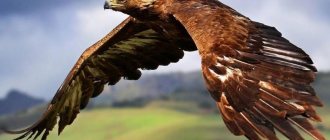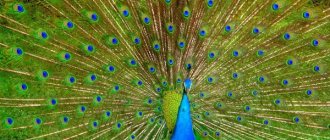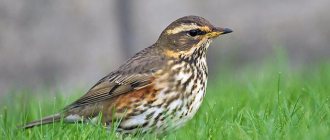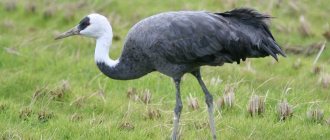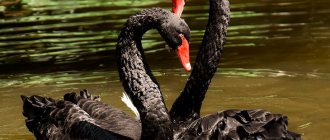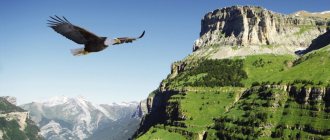- Wild animals
- >>
- Birds
Since ancient times, the blackbird has had a mystical, not entirely good reputation. Many people still associate this bird with something bad and negative. It is believed that if a blackbird flies to a house or sits on a window, then trouble will definitely occur in the family. However, these are just myths that have no basis. In fact, the blackbird is a very beautiful, intelligent and very smart animal. You shouldn't be afraid of him. It’s better to get to know the habits, lifestyle and characteristics of the thrush more closely!
Origin of the species and description
Photo: Blackbird
The blackbird can be called one of the largest blackbirds. This bird can reach a length of twenty-six centimeters, and its weight ranges from eighty to one hundred and twenty-five grams. It is not difficult to recognize this bird. Most males are painted a very bright black color, without a shimmer, so blackbirds are rarely confused with crows. Young blackbirds and females have brown plumage.
Video: Blackbird
A very interesting fact is that among blackbirds there are albinos. They stand out very much from other birds. Albino thrushes have recently begun to actively increase their presence in cities. This had a positive effect on their population size. If in the wild such birds are of interest only to hunters, then in urban conditions they attract individuals of the opposite sex.
Interesting fact: Few people know that the blackbird is an excellent singer. But he sings only at certain times of the day - at sunrise and sunset. His voice and melodies are very reminiscent of elegant flute playing.
Blackbirds are a type of blackbird. They are part of the thrush family, a large order of passerines. Today there are many different subspecies of these birds.
The most common ones can be identified:
- m. merula Linnaeus. This subspecies is very widely represented in Europe, and was also specially brought to New Zealand and Australia. Such birds are distinguished by a very thin beak and a bright rusty color in the chest area;
- m. Intermedius. Found in Russia, Tajikistan, Afghanistan, and China. The birds have dark black feathers, massive beaks, and larger dimensions than other subspecies;
- m. mauretanicus Hartert. These blackbirds live only in China.
Interesting fact: In Europe, blackbirds are more friendly. They associate these birds with Saint Kevin, who is famous for his kind heart. If such blackbirds settle near a house, then Europeans consider this a very favorable sign.
Description and features of the blackbird
The blackbird in the photo has a metallic cast. The bird's iris and beak are orange. Such photographs are attached to most articles, justifying the name of the species. However, the females in it are brown. The abdomen and chest of females are especially light. Their tail is almost black.
Male blackbird
The breast of females of the species has transverse markings. Young males also have them. Before reaching sexual maturity, they have a color similar to females. The spots on the chest and brown coloration are features of the song thrush. Females and young animals of the black species are often confused with it. As an adult, it is twice the size of a sparrow, reaches 26 centimeters in length, and weighs 80-110 grams.
The description of the bird also includes the singing of a blackbird . It is sonorous, composed of sounds similar to those extracted from a flute. The melody is minor, unhurried. The set of sounds in the song of a blackbird is varied.
Listen to the voice of the blackbird
"Aria" does not have a specific length. This also characterizes the performances of the song thrush, but it often repeats musical words. The voice of the hero of the article also resembles the singing of Dryaba, but with uncalibrated pauses and a lower pitch.
Female blackbird
The twitter of the hero of the article is one of the fragments of the Beatles composition. The song is included in the “White Album”, recorded in 1968. At that time, Paul McCartney was the only vocalist, playing acoustic.
The style of singing is the same in all 14 subspecies of blackbird. They differ in size, beak structure, and color nuances. The Richmond subspecies, for example, reaches a maximum length of 26 centimeters. The bird also has a thicker beak than the representatives of the nominate species and has a rusty reflection on the chest.
Some subspecies of blackbird are endemic to certain regions. Thus, Azorensis lives in the Azores Islands. Representatives of the subspecies are more glossy and shiny than ordinary blackbirds. But the subtype Bourdiloni has lance-brown males and almost beige females. Representatives of the subspecies live in southern India.
For most, species identity is the mystery of the blackbird . That, by the way, is the name of the Soviet detective story released in 1983. The film is based on the novel by Agatha Christie. The book, however, has a different name - “A Pocket Full of Rye.” It is just as difficult for a non-ornithologist to understand the intricacies of the plot as it is for a non-ornithologist to understand the differences between the subspecies of blackbirds.
Appearance and features
Photo: Bird blackbird
The blackbird has characteristic external features that distinguish it from other representatives of the blackbird genus:
- relatively large build. The weight of the bird is no less than eighty grams, and its length reaches twenty-six centimeters;
- strong, large wings. The average wing length is eleven centimeters, and the wingspan is at least thirty-five centimeters. The wings are very strong, which allows blackbirds to fly long distances through the air with ease. The wing plumage is slightly rounded at the end, the feathers are rather short;
- good vision. Blackbirds' eyes are located on the sides of their heads and they have excellent vision. However, in order to find food, birds have to constantly tilt their heads to one side or the other;
- short, strong beak. The beak of this species of thrush is usually gray or yellow. The nostrils are open, and there is discreet feathering around the beak. Such plumage is characteristic of many representatives of their family;
- The color of the classic subspecies of blackbirds is black and gray. Males are black, females are gray. However, there are other subspecies that are distinguished by brighter feather colors. Blackbirds are white, with a yellowish color, and speckled;
- short legs. There are fused horny plates on the limbs. Despite their small size, the feathered legs are very strong and tenacious;
- pleasant, melodic voice. At dawn and dusk, these birds sing beautiful melodies. Their voice resembles a flute. The cry of a bird is not very pleasant. The sound is similar to dry crackling.
Interesting fact: The blackbird is an animal with a very strong immune system. Being in the wild, such birds almost never get sick. Only when kept at home can a bird develop various problems.
Where does the blackbird live?
Photo: Blackbird in Russia
Thrushes are a fairly large and widespread family. Its representatives inhabit both the eastern and western hemispheres. Specific places of bird settlement are associated with their species. Each species of thrush has its own preferences. However, when choosing a place, most birds are guided by one criterion - the availability of a sufficient amount of food. If there are a lot of berry and fruit trees in the area, then it is ideal for living.
The blackbird is no exception. This bird chooses territories rich in food. Some representatives of this species of birds lead a nomadic lifestyle, moving to warmer regions in winter, while others are sedentary. The largest populations of blackbirds are found in Russia, Ukraine, and Europe. Birds live even in the northern regions of these territories.
Individual populations of blackbirds are found in northern Africa, Australia, New Zealand, India, and Asia Minor. Animals were artificially introduced to New Zealand and Australia. However, they adapted perfectly to the climatic conditions of these countries and quickly increased their presence there.
Previously, blackbirds preferred to live exclusively in forests. For life, they chose mixed, coniferous, deciduous forests with moist soil. Nests were also found in abandoned parks, overgrown large gardens, located away from human settlements. However, for the past eighty years, blackbirds have densely inhabited villages, towns and even large cities.
What does a blackbird eat?
Photo: Blackbird on a tree
Blackbirds can safely be called omnivorous birds. This helps them survive in the winter, when worms and various insects cannot be found in nature. The most favorite delicacy of such birds is earthworms. In summer, spring and autumn, birds spend a huge amount on the ground, looking for worms. Blackbirds exercise due caution when hunting for worms. They constantly look around and move in jumps. In case of danger, the blackbird instantly flies into the air and leaves the unsafe place.
Worms are also the mainstay of the diet for young blackbirds. Parents feed their chicks with them. This protein diet helps young animals quickly gain the necessary weight and get stronger. While searching for food on the ground, blackbirds are little visible, so they rarely become victims of attacks by predators. Birds search for worms with their beaks, but scientists are sure that when searching, they also use their keen hearing.
In addition to worms, the diet of these animals also includes other foods:
- frogs, lizards, insects, snails, caterpillars. This food is rich in proteins. Protein helps the animal to be strong and spend a lot of time in flight. Such food is especially prevalent in the diet during the mating season;
- berries, fruits. In summer, blackbirds are not averse to eating plant foods. Birds eat only ripe fruits and berries;
- seeds. When there are no worms or berries, birds can eat the seeds of various plants and trees.
Interesting fact: Blackbirds may not drink water at all. The animal receives the entire supply of the necessary liquid with food. During times of severe drought, these birds try to eat more caterpillars, tadpoles, and green aphids. Such food contains a lot of liquid.
Habitat and food
Blackbirds love dampness and freshness. Their favorite habitat is mixed forests with loose, moist soil, a sufficient amount of shrubs, grass and other low vegetation. In the city, birds choose thickets: abandoned and overgrown gardens, vegetable gardens, public gardens, and parks.
Blackbirds are believed to come from the mountains. What does the black color indicate, which serves as an ultraviolet screen in mountainous areas.
The nutrition of blackbirds is simple. The diet consists of mollusks, snails, worms and other small invertebrates. In summer and autumn, the bird eats with pleasure:
- berry yew trees,
- bushes with irga,
- cherry,
- rowan,
- viburnum,
- raspberries,
- strawberries,
- currants
Features of character and lifestyle
Photo: Blackbird
The history of blackbirds dates back hundreds of years. A lot of remains and traces of the presence of such animals were found between the Atlantic and Pacific oceans. Many scientists explain the bright black coloring of blackbirds precisely by the location of ancient birds. Black color perfectly accumulates heat at high altitudes among snowdrifts. Only over time, the habitat of these animals began to change. First to the forests, and then to the cities.
These birds spend most of their lives in gardens, forests and thickets. They choose places with damp, black soil. There are a lot of earthworms in such soil, and against its background, thrushes are almost invisible to others. In the city, blackbirds can often be found in parks, near houses, and feeders. They spend a lot of time with other birds.
Blackbirds lead a mostly nomadic lifestyle. When it starts to get colder, these birds move to warmer countries and regions. However, there are also sedentary flocks. Few of their members survive. Birds often die due to too harsh a climate and lack of food. But, having endured a difficult winter, blackbirds begin to reproduce very actively. Under stress, they can lay about four clutches in one season.
The nature of blackbirds cannot be called friendly. However, these birds do not show aggression when idle. They can attack only in defense of their home, food, mate or offspring. Quite often, blackbirds were domesticated. The process of taming them is difficult, but quite real.
Nesting period
In the spring, the male rests: choosing a place for the nest and its construction is the job of the female. She finds building material near a forest stream or lake, in a wet ditch. Damp earth together with clay helps to hold together the entire structure, consisting of twigs, twigs, moss, lichens and other forest debris.
Construction takes 3-5 days. During all this time, the male brings the female a small twig or stem only a few times. He stays close to the nest being prepared and sings protractedly and beautifully.
In the forest, the nest is hidden skillfully and gracefully: in a lowland, a decayed stump, crown or at the foot of a tree with protruding roots, on a pile of firewood or brushwood. In the city, on the contrary, it is located 10 or more meters above the ground.
During the brooding period (May-June), the main role in feeding the chicks is given to the male. At one time he is able to bring 5-6 worms, while the female only 1-2. Occasionally, the male replaces the female, warming the chicks from the cold. Small blackbirds take wings after three weeks.
Social structure and reproduction
Photo: Bird blackbird
The nesting period for rooks falls in the month of February. At this time, migratory birds return home, and sedentary birds begin to show aggression towards strangers, fiercely defending the boundaries of their possessions. Rooks look for a mate for their entire lives, rarely changing partners. The only exception is the death of the animal. Migratory birds often return to their nests from last year. The young begin building a new nest.
Externally, the finished blackbird nest resembles a large cup. It consists of two layers: internal and external. Birds build the outer layer from branches, leaves, and moss. The inner layer consists of tree dust and clay. Nests are usually small. They reach a height of nine centimeters and a diameter of twenty centimeters. Blackbirds place their nests at high altitudes. Usually it is about eight meters. These birds build houses on linden, birch, spruce, and pine trees. Often the nest can be found on the ground or among the roots of trees.
Interesting fact: Modern blackbirds are quite bold. Those individuals that live in cities are not afraid to place their nests in close proximity to humans. Sometimes they build them directly on balconies or flower beds.
When the nest is ready for occupancy, the female blackbird immediately lays her eggs. One clutch can contain up to six eggs, but history knows of cases of more numerous offspring. The eggs reach three centimeters in length. After hatching, the chicks are completely supported by their parents for some time. Adults feed their offspring with earthworms. By June, the young begin to leave the parental home.
Wild Lifestyle
According to the description of the thrush compiled by ornithologists, these birds live in forests or cities, eat plant and animal food, and their appetite is especially active in the fall - it is important for birds to prepare a reserve of fat for the winter.
Habitat
The blackbird is a fairly common bird with a wide habitat. The bird is found on the western and eastern coasts; when choosing a place of residence, the bird is guided primarily by its food supply.
The main countries where you can find the thrush: Russia, Ukraine, Australia, New Zealand, India, Great Britain. They prefer to nest in coniferous and mixed forests, choosing areas with high soil moisture. However, modern birds are gradually moving to cities.
Summer and winter diet
The blackbird is an omnivorous bird; its diet includes animal and plant foods, which is what allows it to survive in nature and within the city. However, earthworms are a favorite delicacy for birds. When hunting, they are careful, vigilant, ready to take to the air at the slightest danger. In addition, the black color of the plumage is an excellent option for camouflage.
The main food of the summer period: insects, snails, caterpillars, frogs, lizards. These foods are rich in protein, so they are very useful for birds. In winter, thrushes have a much more difficult time, so they are content with berries, fruits, and seeds.
Note! This amazing bird does not need liquid and may never drink, since it receives moisture from food.
Migratory or wintering bird
There is no clear answer. Those blackbirds that live in forests fly to warm countries in the winter. Residents of cities, accustomed to the fact that people feed them or food can be obtained in garbage containers, have become completely sedentary. The warm air layer between the feathers gives birds the opportunity to cope with the cold.
For reference! North Africa is where the blackbird, which lives in the northern regions of Russia, winters.
Reproduction and nesting
Blackbirds begin nesting in February. This month, migratory birds return to their native places. The settled ones begin to defend their territory, which is why they become aggressive. These birds have strong pairs; they prefer a permanent partnership.
The nest is built from branches and leaves, the inside is covered with moss, and its shape resembles a bowl. The diameter is small - up to 8-9 cm. Birds have their “houses” at a considerable height, on birches, pine trees, and occasionally nest in the roots of trees.
The appearance of chicks
There are about 6 eggs in the clutch; the female incubates them for two weeks. The birds take very good care of their chicks and feed them earthworms. The babies develop quite quickly and leave the parental nest in June.
Note! Such rapid maturation is associated with the bird’s short lifespan—no more than 4 years. When kept at home, blackbirds will live up to 7 years.
Natural enemies of blackbirds
Photo: Blackbird in Russia
Blackbirds are very brave birds, always ready to rush to defend their territory, chicks or mate. They know how to defend themselves from an attacker with the help of their wings and beak. They literally attack a potential enemy, which scares away the offender. In most cases, the attacker, after such a violent defensive reaction, hastily leaves the blackbird’s place of residence.
If danger directly threatens the nest, then blackbirds know how to divert the attention of predators to themselves. They pretend to be sick and lure the attacker away from their offspring. Who most often attacks blackbirds and their nests?
There are several of the most dangerous natural enemies:
- crows and woodpeckers. Crows are larger than blackbirds, and they brazenly steal eggs. Woodpeckers destroy nests when their parents are not around;
- owls, hawks, eagle owls. These birds of prey can attack not only the nest, but also an adult. They deal with small thrushes deftly;
- proteins. These cute, fluffy animals also often attack the homes of blackbirds, stealing their future offspring. However, parents often manage to drive away squirrels without much loss;
- foxes, martens. These predators hunt adults or young animals. They try to catch them during feeding, when the birds are busy searching for earthworms on the ground.
Reproduction
The nest of a cup-shaped bird can be located at a height of up to 8 m, on spruce, pine, birch, linden trees, but it can also be located very low, on stumps and even on the ground, among the roots of old large trees. Urban blackbirds sometimes even make nests in flower pots, balconies and window baskets. The clutch of a blackbird contains from 4 to 7 eggs, incubation lasts 12-14 days. The chicks are born naked and blind, and their feathers grow two weeks after birth. They are fed by both parents. The chicks grow quickly and leave the nest within three weeks. True, the parents continue to feed them until the second clutch. Birds living in the southern regions can lay up to three clutches per year.
